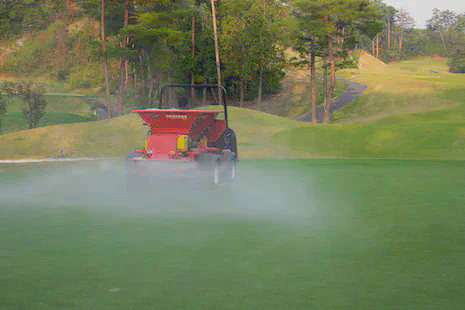A chance to update my advice
A text asking “Have you ever read that?” arrived to my phone this morning, along with a screen shot of the the article in question. It’s an article by Todd Pippin with the title “The five-day program: Alternative philosophy for managing your topdressing program.”
“Yes,” I wrote back. “When that article first came out I used to think, wow, what a good idea. Or sort of think, at least, here’s a way to make topdressing work. Now I think it’s way too complicated to try to manage like that. I used to think sand was so important.” What was I getting at? Well, it turns out that I’ve done more that just read the article. I wrote a blog post in March 2010 about the five-day program article. I’ve included that post in its entirety below.
Back in 2010, I was quite impressed with the five-day program idea as a way to get more sand out onto putting green surfaces. I realized that the sand and all the adjustments necessary to keep the sand on the greens were a lot of work, but I thought then that the extra work and constant adjustments were a necessary evil. If one didn’t do all that, I thought, then the greens eventually wouldn’t have enough air space.

With all I have learned since then, I don’t agree with every word I wrote in 2010. I’d update my advice today. Rather than trying this five-day program, I’d try to minimize the need for sand topdressing altogether. I was making an assertion in 2010 that there is an “unquestionable necessity to regularly topdress putting greens to dilute organic matter.” I think some sand is still necessary, but now I wouldn’t phrase it that way at all.
Today, if I were a superintendent, I’d apply just enough sand to produce the type of surface and growing environment that I need to produce. To achieve that, and to find out how much sand that needs to be, I’d measure how much the grass grows, what the playing conditions are, how much sand I apply, and how the total organic material changes at the surface of the rootzone from one sampling date to the next. From that information, I’d make sure I was applying enough sand. This may not seem profound. It is simple. But it turns out that the amount of sand necessary to achieve the type of surface and growing environment I need appears to be considerably less than half the amount I once thought.
Here’s the full text of that post from 2010, with some statements that I was sure of back then, but would not phrase the same way now, highlighted like this.
If I Were a Superintendent . . .
I would give this topdressing technique a try. Todd Pippin has written an article for the Green Section Record describing his five-day program of adjusting mowing heights and other tricks that can be used to allow topdressing sand to work its way into the canopy without excessive mower pickup.

The necessity of regular sand topdressing to dilute organic matter on golf course putting greens is unquestioned. The problem faced by those managing the turf, however, is that with low cutting heights on greens, the sand that is applied as topdressing sometimes gets picked up by the mowers on days succeeding the topdressing event.
Pippin’s program (you really should study the article with full details) involves a grooming and mowing at 10 to 15% below the starting mowing height on the day of topdressing (for example, mow at 2.8 mm when normal height is 3.2 mm. The topdressing is followed by a heavy irrigation. On the day after topdressing, the mowers are set at a height 10 to 15% above the starting mowing height (for example, mow at 3.7 mm instead of the normal height of 3.2 mm). On days three, four, and five, the mowing height is gradually lowered. Pippin reports that this program allows topdressing sand to be applied with minimal disturbance to ball roll speed and almost no pick up of sand by the mowers.
If I were a superintendent I would give this program a try. Sand topdressing is essential in maintaining adequate aeration porosity in the soil. If you have a chance, give this program a try and see how it works at your course.